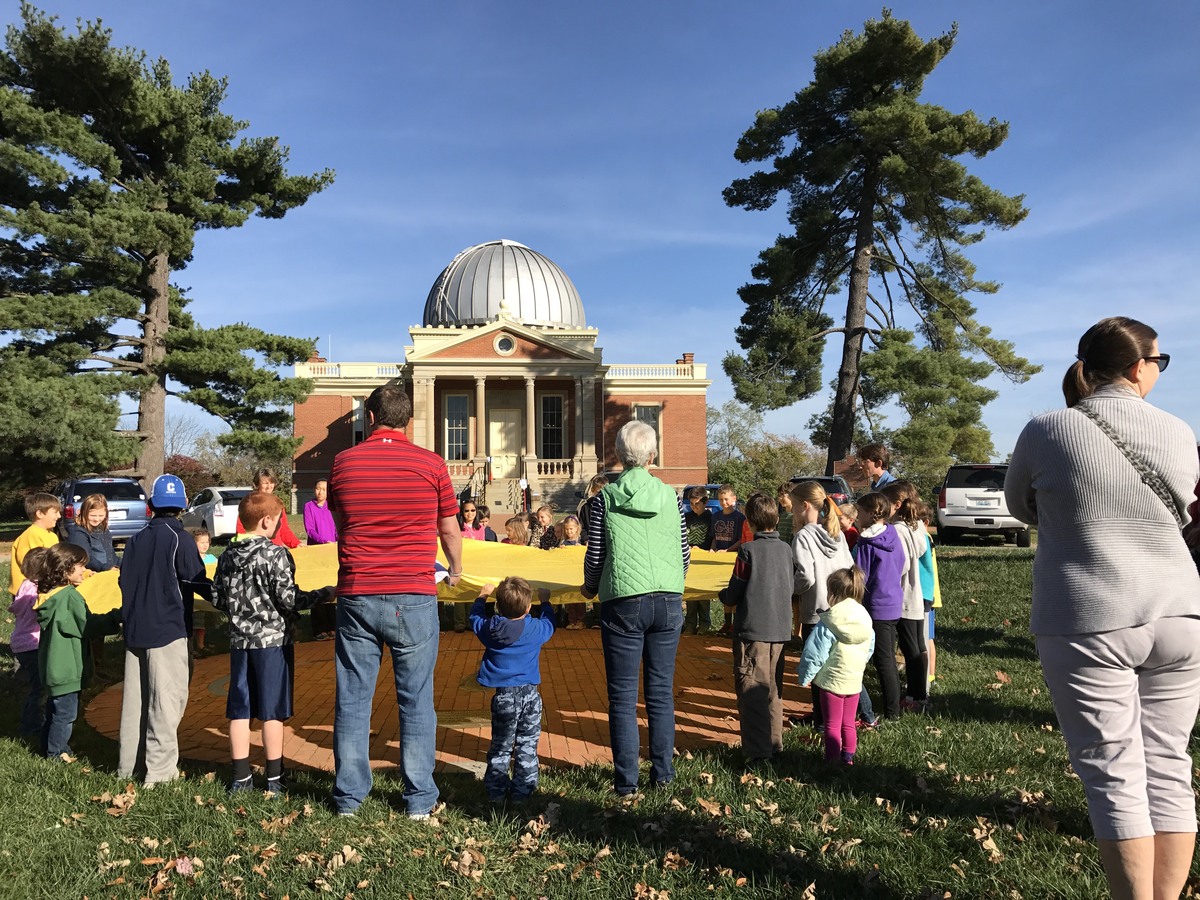Learn
School Programs

Field Trips
There is nothing quite like experiencing the Observatory in person. We like nothing more than to share tours of a working observatory in the heart of Cincinnati. The telescopes are just so cool!
Field trips include a brief presentation on a topic of your choice followed by a tour of the buildings. Weather permitting, you can also safely see the Sun through the telescopes. Programs last 60-75 minutes and are perfect for 1-2 classrooms at a time.
Thanks to several generous funders, we are able to offer a portion of our Youth Outreach programming, including busing, free of charge to underserved students throughout the Tri-state, based on their school's free and reduced lunch rate. To inquire if your school may qualify, please email us at education@cincinnatiobservatory.org
To schedule an field trip, try our Program Request Page

Outreach to You
Can't visit the Observatory? We can bring the Observatory to you!
Our Community Outreach has delivered thousands of programs to area schools, scout groups, libraries, and senior living communities. An educator can visit your group to present fun and in-depth pesentation or deliver hands-on inquiry-based programs that meet academic content standards. We can also bring telescopes for safe viewing of sunspots and solar flares, or even lead an evening star party at your place.
Thanks to several generous funders, we are able to offer a portion of our Youth Outreach programming, including busing, free of charge to underserved students throughout the Tri-state, based on their school's free and reduced lunch rate. To inquire if your school may qualify, please email us at education@cincinnatiobservatory.org
To schedule a program please complete our: Outreach Program Request
.jpg)
Online Programs
We are pros at online programming. We can simulate the night sky, fly you anywhere in the universe, and provide fun, interactive space programs for any age group - no matter where you live.
We will work actively to design a program that is right for your class.
Thanks to several generous funders, we are able to offer a portion of our Youth Outreach programming free of charge to underserved students throughout the Tri-state, based on their school's free and reduced lunch rate.
To inquire if your school may qualify, please or to schedule an online astronomy program just for your group: Online Program Request Page


